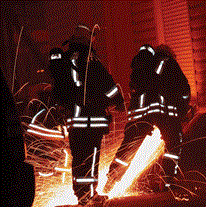FFP1, FFP2, FFP3, N95 DISPOSABLE MASKS
There are different types of medical masks, mouth masks, protection masks on the market for different applications each.
What does an FFP1 filter protect?
• Protects from low dust levels.
• Protects against solid and liquid particles in the air.
• Can be used for hand sanding, drilling and cutting.
• Filters 4 times more particles.
What does the FFP2 filter protect?
• Protects against moderate dust levels.
• Protects against solid and liquid particles in the air.
• Higher protection than FFP1
• Can be used for plastering and sanding.
• Filters 10 times more particles.
What does an FFP3 filter protect?
• Protects against higher dust levels.
• Protects against solid and liquid particles in the air.
• Higher protection than FFP1 and FFP2.
• Can be used to protect against dangerous dusts such as those of the pharmaceutical industry.
• Filters 20 times more particles.
• Can be used as an asbestos mask.
What are N95 protection masks?
The N95 mask is widely known in America (FFP is more commonly used in Europe) and is similar to FFP2 protection. It filters 95% of suspended particles with a diameter of 0.3.
When should you use a mask?
If you are healthy, you only need to wear a mask if you are caring for a person with a 2019-nCoV infection. Wear a mask if you cough or sneeze. Masks are only effective when used in conjunction with frequent cleaning of hands with alcohol or soap and water. If you are wearing a mask, you need to know how to use it properly.
Mask instructions for use:
• Thoroughly clean our hands before applying the mask
• Apply the surgical mask to the face as best as possible, completely covering the nose, mouth and chin.
• Tie the laces on the back of the head and neck or on the ears if it is a rubber mask.
• We do not touch the surgical mask after applying it without washing our hands.
• Carefully remove the mask by grasping only the laces and be careful not to touch it.


















